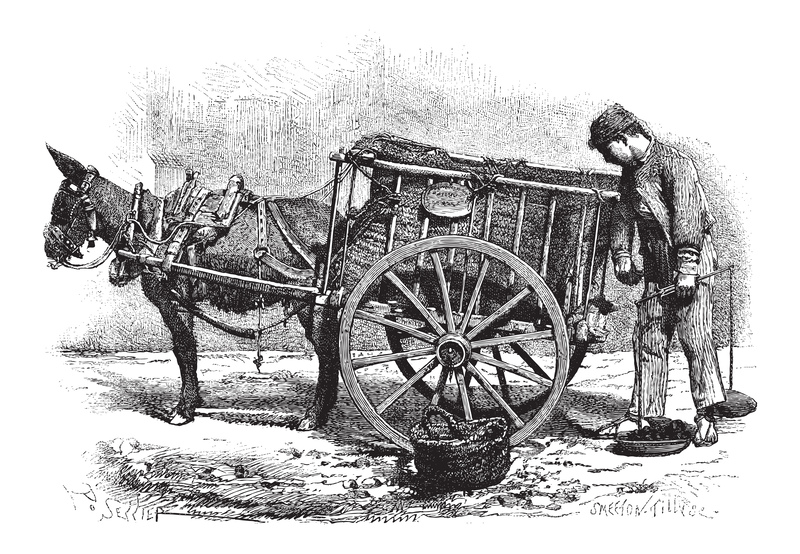Simple and Effective Ways to Get Rid of PPE Waste Responsibly
Personal Protective Equipment (PPE) has become essential in our daily lives, especially since the COVID-19 pandemic. From masks and gloves to gowns and face shields, PPE protects individuals in healthcare settings, public spaces, and workplaces. However, the rise in PPE usage has created a new challenge: PPE waste management. Improper disposal of PPE can harm the environment, wildlife, and public health. So, how can we get rid of PPE waste responsibly? This comprehensive guide will walk you through simple and effective ways to handle, recycle, and reduce PPE waste responsibly.
Understanding PPE Waste: Why Is It a Growing Concern?
PPE waste mainly consists of single-use items like masks, gloves, gowns, and face shields that are discarded after a short period of use. The pandemic has led to a surge in PPE consumption worldwide--resulting in billions of PPE items discarded daily. When not disposed of responsibly, PPE waste can clog waterways, pollute landfills, harm wildlife, and contribute to environmental degradation. Moreover, improper handling of contaminated PPE can pose health risks to sanitation workers and the broader community.
Key Environmental Impacts of Improper PPE Disposal
- Plastic Pollution: Most PPE items are made from plastics like polypropylene, which take hundreds of years to decompose.
- Wildlife Threats: Animals may mistake PPE items for food or become entangled, leading to injury or death.
- Microplastics: Broken-down PPE releases microplastics, which contaminate water supplies and enter the food chain.
- Public Health Risks: Used PPE, especially in healthcare settings, can spread infectious diseases if not properly discarded.
Clearly, managing PPE waste responsibly is crucial for safeguarding our planet and well-being. Let's delve into the best practices for the safe and sustainable disposal of PPE waste.

Simple and Effective Ways to Dispose of PPE Waste Responsibly
The responsible management of PPE waste involves correct disposal, recycling where feasible, and reducing unnecessary use. Explore these actionable solutions to minimize your environmental footprint.
1. Segregate PPE Waste at the Source
The first step towards responsible PPE waste disposal is proper segregation. Here's how to do it effectively:
- Identify PPE Waste: Set aside masks, gloves, face shields, and gowns separately from household or office waste.
- Use Dedicated Bins: Designate color-coded bins for PPE waste to avoid contamination and simplify further processing.
- Clearly Label Bins: Use clear labels indicating "PPE Waste Only" to educate and encourage correct disposal.
*Tip: For homes, a sealed bag labeled "PPE Waste" can suffice if specialized bins are unavailable.*
2. Dispose PPE Waste Safely
Once segregated, it's important to dispose of used PPE according to local guidelines:
- Seal Used PPE in Bags: Double-bag used masks and gloves to prevent leaks or spills during handling and transportation.
- Contact Local Collection Services: Many municipalities have specific instructions for household hazardous waste, including PPE. Check with your local sanitation department or waste management provider.
- Avoid Littering: Never throw PPE on streets, parks, or natural areas.
Did you know?: Some cities have implemented "red bin" programs specifically for medical or contaminated waste--including PPE.
3. Do Not Recycle PPE with Regular Recyclables
It's a common misconception that all plastic items are recyclable. Unfortunately, most single-use PPE materials cannot be recycled through regular curbside recycling due to contamination risks and material composition.
- Avoid Placing PPE in Blue Recycling Bins: Soiled or mixed-material PPE items can jeopardize recycling processes.
- Look for Specialized PPE Recycling Programs: Some companies and non-profits now offer dedicated collection boxes or mail-in programs for used face masks and gloves, ensuring safe and responsible recycling.
4. Consider Alternatives: Reusable PPE Options
One of the best ways to reduce PPE waste is to switch from single-use to reusable PPE whenever possible. Reusable options cut down on waste and costs in the long term.
- Use Cotton Masks: For non-medical settings, washable cloth masks are an effective alternative to disposable face masks.
- Reusable Face Shields: Plastic face shields can be sanitized and reused multiple times.
- Wash Reusables Properly: Follow CDC and WHO guidelines to clean reusable PPE items thoroughly before reuse.
Note: Healthcare settings may require single-use PPE for safety. However, for community and office use, reusables can significantly reduce waste.
5. Participate in Community PPE Waste Collection Drives
Many communities and organizations now organize PPE waste collection drives. Here's how you can take part:
- Locate Drop-off Points: Pharmacies, hospitals, schools, and supermarkets may host PPE collection bins.
- Join Clean-Up Events: Participate in community clean-ups to safely gather and dispose of improperly discarded PPE from public spaces.
- Spread Awareness: Encourage neighbors and colleagues to join responsible PPE waste management initiatives.
6. Support PPE Upcycling Initiatives
In response to the PPE waste crisis, several innovative projects upcycle discarded PPE into useful products:
- Eco Bricks: Some organizations shred and incorporate used PPE into plastic bricks for construction.
- Industrial Fuel: Specialized facilities can convert PPE plastics into energy or alternative fuels via pyrolysis.
- New Products: Researchers are finding ways to transform PPE waste into paving materials, insulation, or storage containers.
Interested in supporting these programs? Look up local or national upcycling initiatives and find out how you can contribute or donate used PPE.
7. Educate and Advocate for PPE Waste Policies
Effective PPE waste management starts with awareness and ends with strong policy. Be proactive:
- Educate Others: Share tips on responsible PPE disposal with family, friends, and coworkers.
- Advocate Local Action: Encourage local authorities and businesses to establish clear PPE waste guidelines, collection points, and recycling programs.
- Promote Corporate Responsibility: Urge workplaces and institutions to invest in safe PPE disposal, upcycling programs, or reusable alternatives.
How to Get Rid of Different Types of PPE Waste
Each type of PPE requires a specific disposal approach. Here's a quick reference guide:
Masks (Surgical, N95, Cloth)
- Single-use Paper or Surgical Masks: Bag, seal, and dispose in general waste--not recycling.
- N95 Respirators: Treat as hazardous waste in healthcare. For home use, double-bag and dispose in garbage.
- Cloth Masks: Wash regularly and reuse. Replace and dispose as textile waste when worn out.
Gloves (Latex, Nitrile, Vinyl)
- Medical Gloves: Dispose in hazardous waste (healthcare); double-bag and garbage (homes, offices).
- Non-medical Gloves: Same as above. Do not recycle with household plastics.
Protective Gowns and Suits
- Disposable Gowns: Treat as hazardous waste in clinical settings. Otherwise, seal and bag with general waste.
- Reusable Gowns: Launder frequently and dispose as textile waste at end of life.
Face Shields and Goggles
- Reusable Shields: Sanitize between uses, dispose via special recycling if possible.
- Disposable Shields: Conventional waste unless local PPE recycling is available.
Best Practices for PPE Waste Disposal in Different Settings
At Home
- Set up a dedicated PPE waste bag/bin away from children and pets.
- Double-bag used PPE, close securely, and dispose with household waste.
- Wash hands thoroughly after handling PPE waste.
At Workplaces and Offices
- Provide PPE disposal bins at strategic locations (entrances, exits, washrooms).
- Train staff on PPE waste segregation and safe handling procedures.
- Partner with PPE recycling services for bulk collection and processing.
In Healthcare Facilities
- Comply with biomedical waste management protocols.
- Use color-coded disposal systems as per health regulations.
- Staff should use PPE when disposing of contaminated materials.
Innovative Solutions for PPE Waste Management
As the issue of PPE waste grows, new solutions are being developed globally:
- Sterilization for Reuse: Advanced sterilization methods, like hydrogen peroxide vapor, extend the life of some PPE items. This reduces costs and waste in hospitals, although it's not suitable for all PPE types.
- Biodegradable PPE: Manufacturers are producing masks and gloves from plant-based or biodegradable plastics, offering a sustainable alternative to petroleum-based PPE.
- PPE-Specific Recycling Programs: Specialized mail-in services (e.g., TerraCycle, MedSupplyDrive) safely collect and recycle used masks and gloves.
- Public Awareness Campaigns: Educational initiatives promote correct disposal and reduce littering in public spaces.

What You Should Never Do with PPE Waste
- Never Flush Masks or Gloves: This clogs sewage systems, pollutes water, and increases costs for water treatment facilities.
- Don't Burn PPE at Home: Burning plastics releases toxic chemicals harmful to you and the environment.
- Avoid Dropping PPE Outdoors: Litter pollutes neighborhoods and natural habitats, and it poses risks to sanitation workers and wildlife.
- Don't Mix PPE with Recyclables: This contaminates recyclables and could render a whole batch non-recyclable.
Conclusion: Make Responsible PPE Disposal Your Habit
With the ongoing need for protective gear, responsibly managing PPE waste is everyone's responsibility. By segregating, safely disposing, supporting recycling and upcycling, and choosing reusables wherever possible, each individual and organization can help mitigate the environmental impact of PPE waste.
Remember, the steps you take today--whether properly discarding a face mask or advocating for better waste management--protect both public health and the environment. Share these best practices, stay informed about local policies, and consider supporting innovative PPE waste solutions to build a cleaner, safer future for all.
Key Takeaways for Responsible PPE Waste Management
- Segregate PPE waste from general trash.
- Never recycle used PPE with household recyclables.
- Support or start PPE collection and recycling programs.
- Switch to reusable PPE when feasible.
- Avoid littering and educate your community.
The journey to effective PPE waste disposal starts with mindfulness and commitment at every level. Adopt these simple, effective ways to get rid of PPE waste responsibly--for a healthier community and a greener planet!